

PORTFOLIO YUZHANG
KYLE SU
YUZHANG KYLE SU
EDUCATION
2023 - 2024 MASTER OF CITY DESIGN
Royal College of Art, London, UK.
Explored multimedia integration to bridge architecture and art, employing experimental approaches with diverse materials and building techniques to reclaim local territories. Critically examined the role of architecture and landscape as “enclosed space” within broader political and urban frameworks.
2019 - 2023 BACHELOR OF ARCHITECTURE
Michael Grave College, Wenzhou Kean University, Wenzhou, China.
CONTACT
PHONE: 0044 07375332742
EMAIL: kyle7914714@gmail.com
ADDRESS:
2 Praed Street, London, W2 1JL, UK.
INSTAGRAM: @kyle.jeff.and.su
LANGUAGES
English (working proficiency) Mandarin (native) Wu (native)
Japanese (elementary proficiency)
SOFTWARE SKILLS
RHINO MODELING
SKETCHUP
MAYA
2D GRAPHIC
INDESIGN
ILLUSTRATOR
PHOTOSHOP
LIGHTROOM
RENDERING
LUMION
BLENDER
KEYSHOT
CAPABILITIES
Teamwork Communication
In-depth Research
Concept Developing
Team Management
Physical Model Making
Architecture Photography
Visualization
INTEREST
Photography
Hand-crafting
Hand-drawing
Traveling
Sucba Diving
Biology
Engaged in a broad spectrum of architectural topics, from tiny houses to large-scale complex projects, with an emphasis on vernacular culture and environmental context as core design strategies to enhance site potential. Additionally, participated in related disciplines, including curation and architectural competitions.
WORKING EXPERIENCES
11/2021 - 11/2022 Wenzhou Kean Design Lab
- Architectural Assistant (2022) Team work communication and design concepts.
- Intern (2021)
Assisting design concept, modeling and rendering.
08/2022 DEDANG DESIGN
- Intern Architectural Assistant Pavilion design, rendering and styling.
07/2022 CATS STUDIO
- Intern Architectural Assistant Assisting early research, project concept, modeling.
HONOR
06/2024 Graduate Prizes, Royal College of Art, London MA City Design Head of Programme Prize.
04/2023 Beautiful Forms of Energy Award, Mannheim Project “Offline Park” win Beautiful Forms of Energy Award in BUGA 2023 Publication and Exhibition in Land Art Generator Initiative, Mannheim, Germany. Collected in book Land Art as Climate Action.
07/2022 Honour Candidate, Michael Grave College, Wenzhou
12/2021 The Dean’s Scholarship of 2020-2021 Academic Year, Wenzhou Kean University, Wenzhou
07/2021 Honorary Selected Students’ Work Show, Michael Grave College, Wenzhou.
REFERENCES
Dima Srouji (Tutor) Email: dima.srouji@rca.ac.uk City Design MA Tutor, Royal College of Art, Kensington Gore, South Kensington, London SW7 2EU.
Evan Saarinen (Tutor) Email: esaarine@kean.edu Assistant Professor, Wenzhou Kean University, 88 Daxue Rd, Ouhai, Wenzhou, Zhejiang, China, 325060.
David Vardy (Tutor) Email: dvardy@wku.edu.cn Distinguished Professor, Wenzhou Kean University, 88 Daxue Rd, Ouhai, Wenzhou, Zhejiang, China, 325060.
Linnea Moore (Tutor) Email: linmoore@kean.edu Assistant Professor, Wenzhou Kean University, 88 Daxue Rd, Ouhai, Wenzhou, Zhejiang, China, 325060.
PROJECTS
O1
MATERIAL MEMORIES
SOIL RESTORATION + LANDSCAPE
ROYAL COLLEGE OF ART CITY DESIGN UNDERGROUND PALESTINE
DIMA SROUJI
JERICHO 2024
O2
AMPHIBIOUS STINGRAY
SELF-SUSTAINED COMMUNITY
WENZHOU-KEAN UNIVERSITY
ARCH3106 STUDIO
R. SPENCER STEENBLK
ZHOUSHAN 2021
O4
DIGITAL DREAM
VIRTUAL LANDSCAPE COMPETITION ENTRY
SHUCHEN LIU
SHANGHAI 2022
O5
THE ROOT OF THE MOUNTAIN COOKING SCHOOL
WENZHOU-KEAN UNIVERSITY
ARCH2104 STUDIO
LINNÉA MOORE + EVAN SAARINEN
WENZHOU 2021 O6 THE 3RD LINE
ELEVATED WALKWAY SYSTEM
ROSSO ART EDUCATION CENTER
XING HUAN
HONGKONG 2023

MATERIAL MEMORIES
In political terms, an enclosed garden represents control over land. In agriculture, soil quality signifies the level of control over the territory. In Jericho, Palestinian farmers in the Al-Auja area have struggled for decades of degradation, shifting from diverse polyculture to monoculture due to the exploitation of local agricultural resources by illegal Israeli settlements.
Material Memories seeks to restore the ecological environment of northern Jericho, helping Palestinians reclaim control over their land. By improving soil quality and restoring crop diversity, the project aims to reinforce Palestinian sovereignty. Enhanced soil fertility and crop variety are crucial for reviving Jericho’s agricultural heritage, once known as the “Fruit Basket.” Key elements of the project include the use of improved gypsum rammed earth walls and salt-tolerant plants. This combination of both artificial and natural methods creates enclosed gardens that can thrive in Jericho’s conditions, promoting a resilient agricultural landscape.

MATERIAL EXPERIMENT


The inaugural set of materials primarily features a diverse array of fruits, including oranges, bananas, papayas, and apples, complemented by modest quantities of soil and sand. This assortment symbolises the era before 1967, during which Jericho was recognized as a sovereign entity, boasting bountiful fruit yields and rich, fertile lands. As a city famed for its utilisation of an ancient aqueduct system to cultivate waterintensive fruits, Jericho has historically been esteemed as a paradisiacal haven by the Palestinian people. “Bringing water to an inhospitable place was in itself the utmost representation of sovereign power," with the presence of a wide variety of crops underscoring a capacity for embracing "diversity" as a reflection of rights and governance.
Moving on to the soil analysis stage, We aim to identify the most suitable conditions for the material's natural digestion. Mud brick, a traditional and widely used building material in the region, plays a significant role in local architecture. Drawing on this tradition, we propose using local soil as a primary building material, incorporating gypsum powder to naturally mitigate soil salinity in wall structures. By utilising rammed earth, a low-tech material, local farmers can efficiently construct these walls, leveraging their existing expertise with mud brick. Rammed earth walls are subject to erosion by rainwater and are expected to gradually integrate with the natural landscape over time. This process will eventually return the enclosed garden—a living archive—to nature, blending seamlessly with the environment and enhancing its ecological diversity.

SITE PLAN, AL-AUJA, WEST BANK
MASTER PLAN
The final site plan conveys the anticipated outcomes of the project's ultimate phase: a complete enclosed garden maintained by local farmers, where rich biodiversity begins to counteract the monocultural agricultural colonisation of date palm fields. Just as the enclosed garden no longer requires physical walls, altering its relationship with the environment enables the local population to reclaim their land. The Material Memories project aims to transform the current monocultural political landscape, dominated by Israeli colonisation, by restoring native species diversity. This initiative resonates with the efforts of Palestinian artist Vivien Sansour, who established the Palestine Heirloom Seed Library, a living archive that narrates the cultural stories of Palestinians through biological heritage. By evoking historical planting memories, the project also stands as a resistance to the future expansion of Israeli settlements.

+ "Plant species transformation signifies authority and order within enclosed gardens"
+ "Channelling water into a barren landscape serves as a supreme symbol of sovereign power"
+ "The boundaries of enclosed gardens are not necessarily defined by the external walls of a building but by their relationship to the surrounding architecture"


Rammed Earth is chosen as our main architectural material to build a series of walls. We will dig out the earth on the site, mix it with plaster powder, then ram it into a wall and bury a part of it into the land. So the wall becomes not only an architectural element but also a part of the solution of high salinity.




Beehives and insect hotels are built on the wall to attract local insects for helping pollinate fruits. As the insects will attract animals like birds and small mammals, the insect hotel contributes to rebuild the ecosystem.
The canopies, while providing shade for people, play a crucial role in protecting fruits such as bananas and tomatoes from water evaporation and sun exposure during the dry season.

To ensure a rational distribution of the underground root system and prevent nutrient competition, various crops are positioned in distinct areas. For instance, the primary root systems of date palms are significantly deeper than those of local herbaceous plants. By distributing the date palms across expansive gardens and open spaces, they can better integrate with other crops.


The openness creates habitats for native insects and birds, facilitating plant pollination and contributing to broader biodiversity.

Situated at the highest points of the site, formed through soil excavation, and featuring semiopen walls, these guardian houses provide observers with expansive views of the surrounding landscape.



The 1:2 scale model allows us to highlight intricate details and demonstrate how the rammed earth wall integrates with underground soil and plant roots. This scale is large enough to provide a clear view of the material’s properties and construction methods. The physical models serve as powerful storytelling tools, bridging the gap between conceptual ideas and their physical realization.

BUILDING PROCESS I
BUILDING

DETAILED SECTION II

the project's final incorporates rammed earth walls, diverse crops, gardens, guardian houses, and canopies. Approximately five years after the construction of the rammed earth walls, all planned species will be established on site, forming a complete ecosystem. However, as an enclosed garden, ongoing maintenance by the local community will be essential for its sustained health and vitality.




1:50 MODEL
1:50 MODEL
1:50 MODEL


AMPHIBIOUS STINGRAY
This project envisions a future shaped by the post-COVID world, where remote work has become a permanent fixture. The technologies supporting remote work have flourished during the pandemic, enabling people to perform their jobs while immersed in nature. It is anticipated that high-income professionals, such as digital content creators and IT workers, will increasingly choose to live in remote, self-sustaining communities, blending their work life with the tranquility of natural surroundings.
SELF-SUSTAINED COMMUNITY
WENZHOU-KEAN UNIVERSITY
ARCH3106 STUDIO
TUTOR: R. SPENCER STEENBLK
DAVID VARDY
ZHOUSHAN 2021








MAP OF QUSHAN ISLAND

Qushan is an island of Zhoushan City in Zhejiang province. Fishing villages to be the place where most islanders live. Due to the government's poverty alleviation policy and competition with the fishing industry from Shanghai, the population structure of the island has changed dramatically in the past decade. Villagers were asked to move to new residential buildings on the island, and some left the island. These resulted in the abandonment of a certain number of villages on the island.




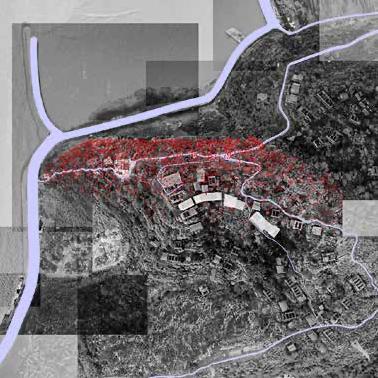



WIND ANALYSIS
The site is in the largest offshore wind farm cluster in Zhejiang province, the average wind speed reaches 6.9m/s. Annual effective wind speed hours are 8102h, which means there is plenty of potential wind energy can be generated in the project.
Abandoned houses are cover by boston ivy. It shows how artificial structure is dominant by the nature. Boston ivy has grown and dormant period. The dynamic change of ivy leaves brings abandoned buildings back alive.
GROW AND DORMANT PERIOD OF IVY
EXPERIMENTS





























In parallel with site research, footages of architecture, regional culture elements, and urban fabric are fed in AI to generate a new visual style. Salient elements of the new images are the potential form for this project. Specific elements are developed into three dimensional models. Then these models are transferred as architecture elements.
REDESIGN THE FOLK BUILDINGS

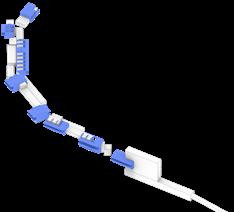











The basic framework and building materials of vernacular architecture are kept. New elements like steel frame are added to reinforce the structure. Based on the functions, parts of the design are following the neural style transfer. Some of the parts are repecting the regional culture.



The red linear shape is selected to develop the form of the roof that follows the layout of original folk buildings and terrain.

HOUSING

Crystal cubes in the style transfer image is developed into housing area of this project. It is covered by glass, creating a micro-weather inside the building.
REFERENCE - INVELOX WIND TURBINE



CIRCULATION OF ENERGY





Invelox is an innovative wind turbine designed by SheerWind. It's a cost effective, high performance electrical energy generation system. With no harm to humans or wildlife, it requires less maintenance, and produces more electricity per dollar than conventional systems. The wind turbines used to produce most of the electricity needed in the project. Streamlined shape enables more efficient use of wind energy. These wind turbines serves as a column to reinforce the framework of the power plant.
Qushan island has strong enough wind all year round, wind is used as the main energy source for the whole project. Wind turbines under the bridge provide electricity to the power plant and the port. The power plant receives all the electricity and transmits it to the various parts of the project. This means that the power plant is one of the most important parts of the project, requiring strong structures to protect it from typhoons.
LINNEAR ROOF
Being pictured as a futural project, different kinds of advanced technologies are utilized. Drones will be the main method to deliver packages. Opennings on the roof provides an entrance for the drone to land.

Organic pattern of the roof provides space for boston ivy to grow on its facade, making the builidng blending into surroundings. It also create posibilities for insects like bee to live in the roof structure, which is beneficial to creating a selfsustain place.

FACADE STUDY
Unlike parametricism, which uses virtual shapes and computeraided representations to create smooth and continuous forms, postparametricism focuses on how architects can play a leading role in the non-linear digital design process. The roof of this project is broken into 4 modules, making the constuction process more practical. The texture of the facade changed from dominated by braced grid to dominated by hexagon cells. 3D printed metal is considered as the building material to reinforce the buildings underneath it.







Organic structure provides possibilities for creating niches for different creatures.

Sunlight filters through the roof, creating a texture of light and shadow in the interior.
METAL 3D PRINT ROOF








For the housing area, roof is like a shell covered by azure glass window and light yellow steel frame to create a crystal feeling. It helps residents shelter from wind, and creates an open indoor space. There are opennings on the top for the building to release heat during summer. The micro-weather enclosed by the roof also enables exotic plants to grow inside the building.
CHRISTAL DORMITORY
ROOFS
PHYSICAL MODEL





DIGITAL DREAM
The world is at a turning point of division and communication. Internet was considered as a great tool for people around the world to communicate, but now the fact is that people with different ideas are more fragmented into their respective comfort zones. The first is the singlepreference content that the operating company puts on individual users in order to make a profit. The second is political interference and control, which makes the Internet in some areas build up barriers, and ideas cannot be exchanged and understood by different groups. In addition, physical communication in the post-coronavirus era is easy. This has led to increased estrangement between people, prompting new forms of loneliness to swell in Gen Z. But with the centralization of the blockchain, artificial intelligence and the concept of the metaverse are constantly being strengthened, whether the Internet can regain a turnaround, create a more ideal world, and reconnect people.

























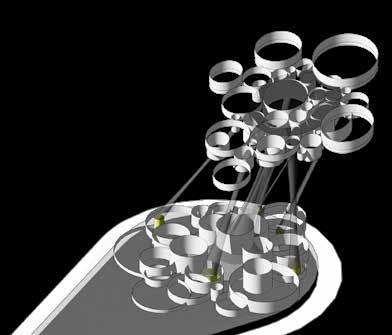
OVERALL FORM DIAGRAM
M-theory is a theory conjectured by Edward Witten, that unifies all consistent versions of superstring theory. Although these superstring theories initially appeared to be very different, work by many physicists showed that the theories were related in intricate and nontrivial ways. It reconciles general relativity with quantum mechanics. The basic idea of different dimensions could be considered as different functional space in the project.











Bohor's Model Atomic Orbital II
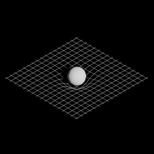


Quantum mechanics is a fundamental theory in physics that provides a description of the physical properties of nature at the scale of atoms and subatomic particles. The dynamic orbital of atom can be imagined as the overall functioning of the virtual world.
General relativity is a theory of gravitation developed by Albert Einstein between 1907 and 1915. The theory of general relativity says that the observed gravitational effect between masses results from their warping of spacetime. The concept could be utilized to inspire the overall form and space.
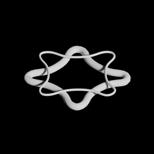

DEVELOPMENT OF PROGRAM
Players will play as agents and travel separately through time to save the world in the Time Stories. They can visit a same place repeatly in different time to collect clue At some point, players can exchange information in the conmmunity space. limitation will be set to make communication more challenging.
This board game, Gloom Haven, is divided into 2 layers. The first layer uses a random card system for players to explore the room that contains clue, trap and enemy. The second layer with a cente r space enables players to exchange information to achieve their goals.
Players should keep the back of the card facing themselves and the front facing their teammates. The team has to make decisions through limited communication to keep the fireworks going.
Match Me tests the player's synesthesia and tacit understanding. Red columns in the diagram represent players. The circles represent players' cognitive range. The yellow walls represent the consensus between different players with different cultural background.
The blue area represents the islands of Forbidden Island. Players need to work togther and understand the island rafting rules to get the treasure (the red spheres).



CASE STUDY III
Areas are overlaped to create more space, which could be used for residential in the project to contain diverse participants.
Curved walls intertwined into each other, which creates intersectional spaces as a representation of commonality.
Boundaries between different different zone are set for participants to break. Induce people to communicate.
Cooedinates are set in the world to give participants a purpose to explore the world.







































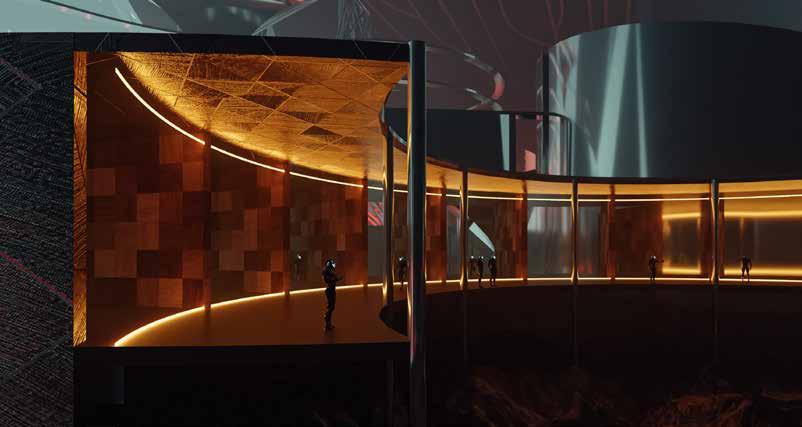
TUNNEL II
TUNNEL I

Since different players come from different time zones around the world, the concept of time zones will also be applied to different areas of this virtual world. However, players will still be randomly assigned to different areas to explore. The virtual time zone does not refer to the real time zone, and the day and night will be adjusted to 24 hours and 11 minutes according to the human Circadian Cycle.

Since the issue of light pollution is not involved, the effects of light on creatures other than humans do not need to be considered. But some participants will experience the world through future immersive devices, the light will be adjusted to specific participants. This means that the lighting scene that each participant can see is different. If two or more participants voluntarily share a light scene, they can see each other's light scene.
THE ROOT OF THE MOUNTAIN
"From a dish to an architecture", is the design concept of this project. Crab Roe Soup Dumpling is one of the most famous dishes in Jiangnan Region, China. The ingredients decided the needed functions of architecture be designed. The main purpose of this project is to plug in a cooking school in a village called Shangen, Wenzhou. Not just being a school for students and senior chefs, this project will also bring more vitality to the village, becoming a new vibrant spot in Wenzhou.
DIAGAM OF INGREDIENTS & PROGRAM
The program of the project covers the entire process from ingredients to food processing, to cooking, and finally to sales. Each step corresponds to one building space.




























DIAGRAM OF FACILITIES
This diagram is showing all the rooms and necessary facilities needed in the building. It's corelating to the diagram of the ingredients.

MITTEN

From this direction, when people are enjoy meal in restaurant, they can observe the production processes includes fermentation and hydroponics.



Section B shows gallery and sculpture can be seen from cafe and roof garden. Section C shows kitchen and ingredients storage area can be seen from the third floor.


SECTION A
SECTION B
SECTION C
1ST


The dormitory is a private space that only faculty and students are allowed to enter. One way window film is used to ensure privacy. The exterior facade is a reflective dark screen that corelates to the river and sky. The dormitory includes different kinds of functions like garden, gym, lundary and so on.
DORMITORY (VIEW FROM COOKING SCHOOL)
FRONT GARDEN OF DORMITORY


The renderings shows the facade of the building from different angles. From west to east, the steel frame is exposed, this tectonic expresses a light feeling of the building. Each function inside the building can be observed.
From east to west, the facde become solid. The building is covered with concrete walls. It is protecting the building from the road. The fabric can also be seen as a continous of traditional buildings.
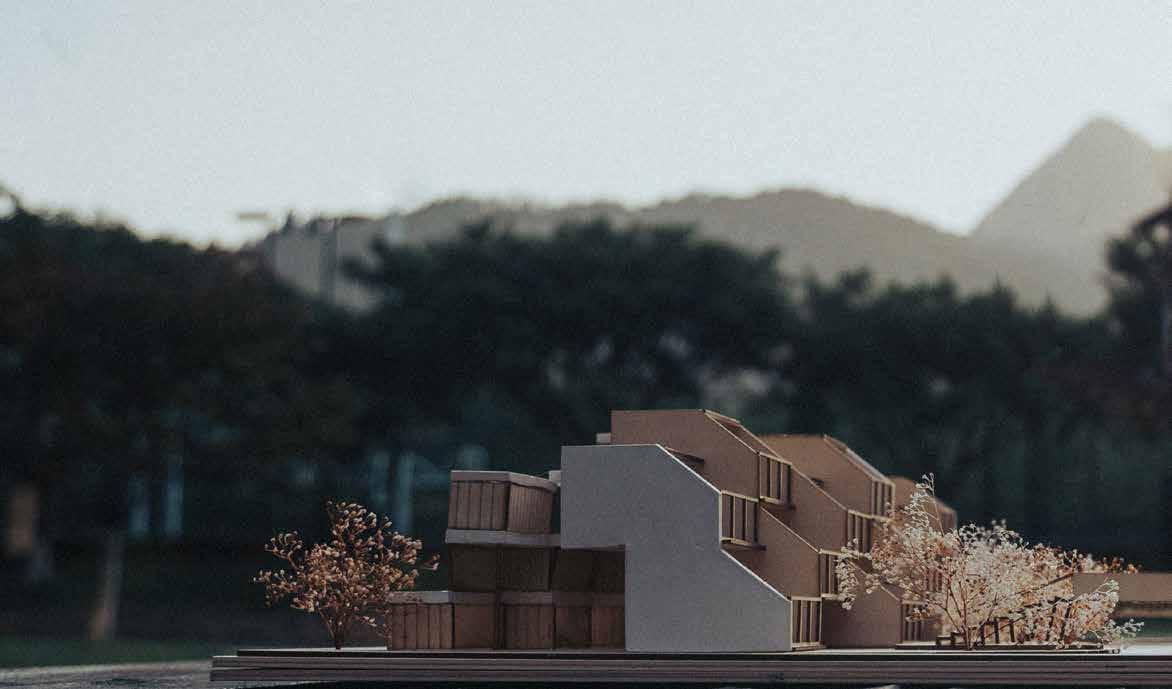
FACADE (WEST TO EAST)
FACADE (EAST TO WEST)


The whole project is about mixing art and food together, like cross-promotion. Different spaces with different functions are overlapped to create interactions. People with different profession can work together to get inspiration. There are also some transformations from different directions. From North to South, it is from public to private. The building materials transformed from hard materials like steel and concrete to soft building materials like wood and glass. From West to East, the form and use of materials help the project continue the fabric of the villages. Being the intersection of two directions, this project created a universe in the square frame, like a mixed diagram of food and art, private and public, tradition and modern.

1ST FLOOR OF CAMPUS WITH SITE
PHYSICAL MODEL


THE 3RD LINE
A complex system of pedestrian bridges was built in the center of Hong Kong during the 1980s and 1990s, which greatly improved the efficiency of the city's operations. Some of these bridges pass through different areas of civic life at the same time, and have the potential to expand vertically and horizontally to increase connections between different areas. This project selected the pedestrian bridge connecting Central Plaza and Wanchai Computer City to expand its space in the city and establish new connections. Enrich the functions of pedestrian bridges in public life.
SITE LOCATION


ANALYSIS OF SURROUNDINGS
There are skyscrapers located in the areas along the bay. These are the workplace for citizens. The area functions as business center.
The buildings at the Lockhart Road are mainly for residential and commercial. This area dominates the richest part of civic life in Hongkong.
The buildings at Hennessy Road have public facilities like sports center. Commercial and residential space are also included.
This collage is showing the current condition among activities of citizens, the central elevated walkway, and the urban landscape in Hongkong. Questions like how to provide spcae for outdoor markets and resturants, create pocketparks for people to relax and communicate, and open up more opportunities for parade.





HONGKONG
CENTRAL ELEVATED WALKWAY
COLLAGE OF CURRENT CONDITION



3 SPOTS TO DESIGN
Three spots of the elevated walkway have the potential to be extended, Which have routes of walking can be complicated. They are the red area highlighted in the plan.
ANALYSIS OF PEOPLE ACTIVITIES
In addition to passing-by, people in different regions will have different behavioral biases. The elevated walkway that passes through Hennessy Road, Lockhart Road, and Jaffe Road covers the richest range of human activities in the city.
ANALYSIS OF CIRCULATION
When pursuing efficiency or using vehicles, routes tend to be linear and gridded. When the route is done by human walking, the route tends to be curved and organic. It will affects the form of the project.
JAFFE ROAD





LOCKHART ROAD


ROAD










HENNESSY



ENERGY FLOW OF THE ELEVATED WALKWAY
The whole elevated walkway utilizes different technology to generate green energy. These technologies are placed in different layers, making the project a tabular power system.
GENERATING ELECTRICITY FROM SOLAR ENERY
SOLARROOF
TRANSPORTING ELECTRICITY
ELECTRICITY COMSUMED BY SOCKETS AND ELEVATORS
ENERGY GENERATED FROM FOOT STEPS AT ROOF GARDEN
STEELCOLUMNS&GLASSWALLS
SUPPORTPILLAR&ELEVATOR
ROOFGARDEN&CAFE
ENERGY GENERATED FROM FOOT STEPS AT STAIRS
PAVEGENTILES&STAIRS



MULTIMEDIA WORKS
BREATHING METAL
PHOTOGRAPHY
EXHIBITIONS
INSTALLATIONS
ARCHITECTURE PROJECTS



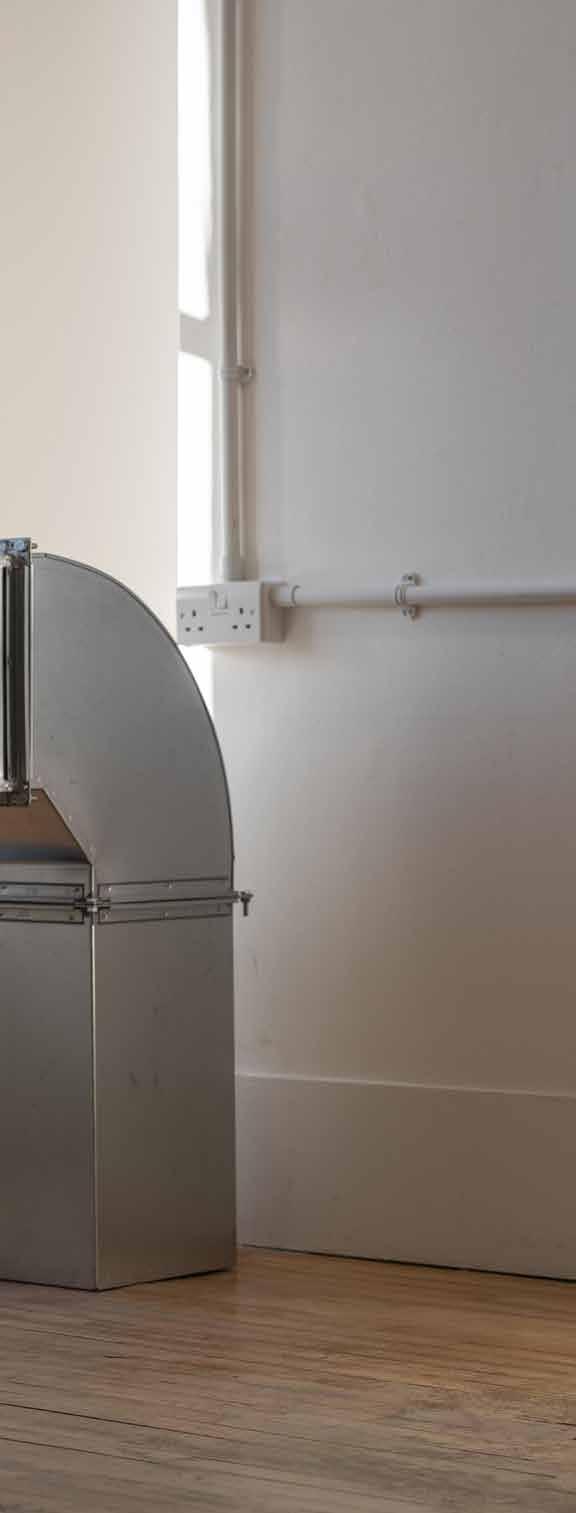

BREATHING METAL
PROJECTION MAPPING INSTALLATION
Exhibitions:
Crypt Gallery, London, Aug 2024.
RCA Degree Show, The Truman Brewery, London, June 2024. MS9, Steven Building RCA, London, Feb 2024.
Leaded by Daryan Knoblauch
Spittlebugs have evolved a remarkable survival strategy: they feed on fluid from deep within roots, which is nutrient-poor yet abundant in water. To cope, they excrete excess water, forming bubble nests that serve as shelters. These nests are not only distasteful to predators but also ingeniously regulate temperature, moisture, and oxygen levels, creating a suitable microenvironment for these small creatures amidst harsh natural conditions This phenomenon offers valuable insights into the concept of enclosed spaces, especially in light of human challenges.
Reflecting on 20th-century innovations, we see parallels in human ingenuity. Consider the diving suit, an extension of the human body that allows exploration of underwater realms, or Buckminster Fuller’s Geodesic Domes, which encapsulate human activities and environmental impact within a semispherical structure amidst nature.
Today, as we face the escalating challenges of climate change, the external environment is increasingly inhospitable. This demands novel concepts and methodologies for creating enclosed spaces that can adapt to rapidly changing conditions.
PHOTOGRAPHY WORKS


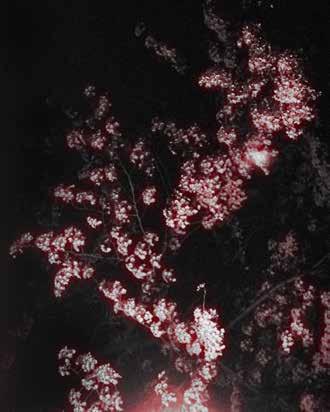






















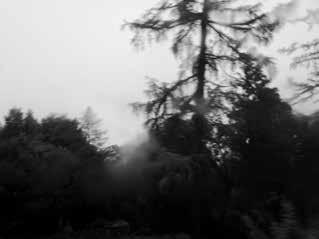





EXHIBITIONS
FUTURE LAB / WEST BUND
Exhibition Design
Wenzhou Kean Design Lab (Leaded by David Vardy)

COMPUTATIONAL IMPRESSIONISM
Art Exhibition
Longxi Art Museum, Wenzhou
Leaded by R. Spencer Steenbilk





INSTALLATIONS
PROJECTION MAPPING INSTALLATION
Gehekai Building, Wenzhou-Kean University
by R. Spencer Steenbilk

CONSTRUCTION WORK


LIGHT INSTALLATION


Leaded
STONE BAR
Maolan, Guizhou
SWIRL
Shaoxing, Zhejiang

THE LAST NUCLEAR BOMB MEMORIAL
Tong Yuyang, Cai Nuoying, Sun Baiqianqian, Wang Xinyu, Su Yuzhang / Evan Saarinen, Linnéa
Moore
Wenzhou Kean University, Michael Graves College of Architecture & Design
Nuclear power as a sustainable energy source has brought many benefits to mankind, but the nuclear weapons is a hidden danger to human development in the future. When a nuclear weapon is detonated, it will produce a blast of enormous heat and lethal ionizing radiation. During World War II, the first nuclear bomb was dropped on Hiroshima on August 6, 1945 which resulted in the deaths of approximately 130,000 Japanese civilians and military personnel. Therefore, we want to create designs for "The Last Nuclear Bomb Memorial" to support the call for a ban on nuclear weapons.

